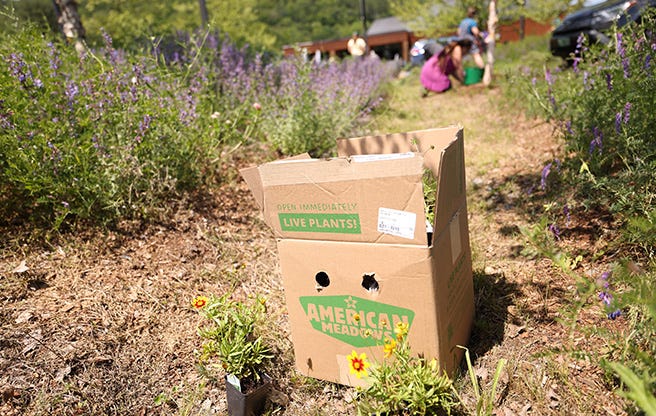Originating in the Mediterranean, lavender prefers hot sunny days, dry air, and non-enriched, well-drained soil. While that’s great news for those gardening in the West, nowadays lavender can also be successfully grown in higher-humidity areas of the East and Pacific Northwest very successfully by remembering its basic needs. Be sure to pick a variety that is matched to your area. Depending upon your location and your desired use, there are lavenders for almost any setting. Next, follow the four basic elements to ensure lavender success:
1. SUN Lavender loves sun. Plant them in a sunny location where there is plenty of air circulation. Six to eight hours of sun is best, but some afternoon shade is fine in the hotter climates of the Southwest.
2. AIR Good air circulation is essential, especially in areas of high humidity. Lavender is not fond of damp, still air, which makes it prone to root rot. In humid areas, plant them with ample spacing, keeping in mind the mature size of your plant when in bloom and allowing for a bit extra space for good circulation.
3. SOIL Well-drained soil. This is perhaps the most important factor in success with lavender. One rule of thumb from is that the soil should be loose enough to dig with your hands, and not cake-like. You can add sand or small gravel to recreate this consistency if your soil is too compact. In areas where drainage may be a problem, mound the soil up to create a raised row or stand-alone mound.
In humid areas especially, a 1-2” mulch of pea sized gravel or white sand will do two things – it will help improve drainage, and it will reflect heat and light back up into the plant. More heat = more fragrant blooms! If you use a weed barrier, make sure it is breathable so the soil can drain and the roots can breathe.
4. WATER During the first year of your lavender’s growth it needs to establish a good root system. It will require regular watering (unless you’re experiencing healthy rain fall). Starting in the second year, your lavender will need less water, as it becomes the water-thrifty plant you’re hoping for, but to get there it needs to grow deep roots in year one. By the end of year three it will have reached its mature size and shouldn’t need any extra water. If water is needed, water in the morning, and deeply, to help root growth. A mature lavender plant is happy with only 9-12 inches of rain per year, but remember, with the right variety and good drainage lavender can thrive with more water.
Learn How to Grow Lavender in Detail.




